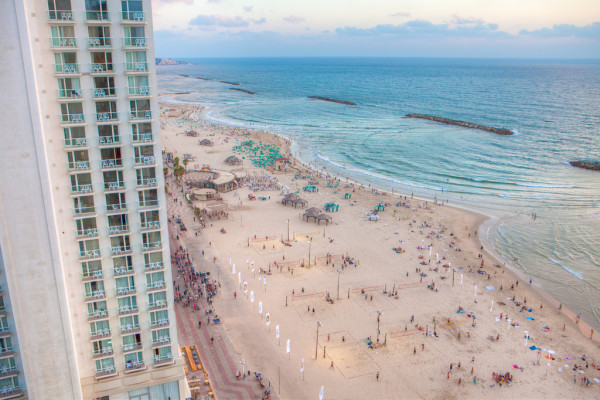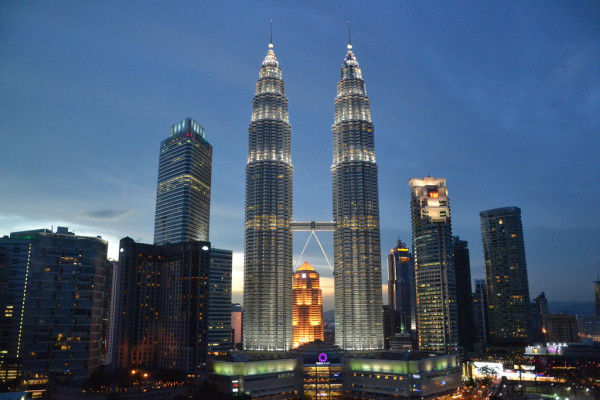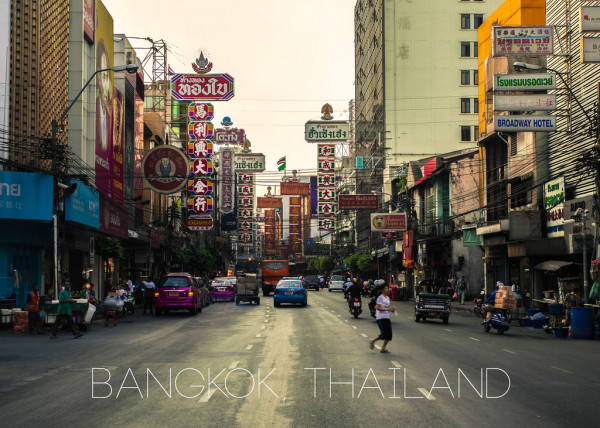10 Visa Free Countries You Can Go To Now
written on July 30th, 2015 by Rafia Abubakar
Does the daunting thought of acquiring a visa stop you short of getting on the next flight out of the country? Fret not. As of January 2012, Philippine Passport holders are allowed to visit 25 countries visa-free! That’s still quite a number to go through. The list mostly includes our neighboring Southeast Asian countries, but places in Latin America (Brazil, Peru, Bolivia and Costa Rica) and Africa (Morocco, Zambia) are also within your reach.
Let’s narrow down the list to 10 interesting countries you need to consider in your travel plans.

Photo by Jerome Yewdalll
1. Cambodia – 21 days (allowed for visa free entry).
Tucked between Thailand and Vietnam, big on temples and a vast rural landscape, Cambodia is often overlooked by the tourist. But the simple beauty of this country, seemingly time-warped, is not something to miss. Behind the quiet nature and ancient temple, the land has a rich history. It may have been marred by a tragic past, but what country hasn’t had its share of dark age?
If you fancy yourself an adventurer with a thing for ancient architecture, then the usual sight to see in Cambodia would be the world-famous temples of Angkor Wat. The ruins were once the temple city of Cambodia-past, Khmer Empire.
2. Hong Kong – 14 days.
Hong Kong is a former British colony, in southeastern China. There’s always something for everyone in Hong Kong; a business hub, a major global port, shopping central in Asia, east meets west cultural mix. It won’t matter if you’re a first timer or have been there and back several times. It’s a city-state so alive and bustling, it’s easy to be overwhelmed. Sometimes, one trip is not enough.
Just to name a few of the things you can do: Have your breath taken away as you take vantage viewpoint of Hong Kong’s skyline on the The Peak, taking the Peak Tram to the top of course. Go shopping, if you have the gift of haggling, the shopping districts and street night markets of Mong Kok is your haven. Take a stroll down the harbour and catch the Symphony of Lights along the Avenue of Stars. Bring out the inner child and check out the amusement parks good for the whole family, at Ocean Park and Disneyland. And for a more serene sightseeing, don’t forget to check out some of the country’s heritage sites and visit the Giant Buddha.

Photo by Dennis Jarvis
3. India – Visa upon arrival valid for 30 days (limited only to New Delhi and Mumbai airports)
When one thinks of India, visions of colour comes to mind, the spicy food and the sing-song voice of the people as they speak. From the Himalayan peaks (where Earth’s highest peak – Mt. Everest rests) to the Indian Ocean coastline, and a rich recorded history dating back thousands of years, the vast South Asian country has so much more to offer.
In the north, Mughal Empire landmarks include Delhi’s Red Fort complex, massive Jama Masjid mosque and Agra’s iconic Taj Mahal mausoleum. Pilgrims bathe in the Ganges in Varanasi, and Rishikesh is a yoga center and a base for Himalayan trekking.
4. Indonesia – 30 days.
An archipelago just like the Philippines, this Southeast Asian nation made up of thousands of volcanic islands, has a variety of ethnic groups each with different languages. With all those Islands and volcanoes resting in its midst, the country has a dense rainforest and jungles with wild beats, such as elephants, tigers and Komodo dragons.
The tropical country is also known for its beaches, and the ones in Bali is the first to come to mind. On the island of Java lie Indonesia’s vibrant, sprawling capital, Jakarta, and the city of Yogyakarta, known for gamelan music and traditional puppetry.

Photo by israeltourism
5. Israel – visa-free for tourists (no. of days of stay will depend on Immigration); visa-free for holders of diplomatic and official passports; visa required for business)
Known in historical religious circles as the Holy Land as acclaimed by three of the oldest religions, Judaism, Christianity and Islam. To this day pilgrims set out on a journey to the Holy Land for retreat. Its most sacred sites are clustered in Jerusalem’s Old City, including the Temple Mount, Dome of the Rock shrine, Al-Aqsa Mosque and Church of the Holy Sepulchre.
Israel is a Middle Eastern country on the Mediterranean Sea, Its financial hub, Tel Aviv, is known for crisp white architecture, beaches, and nightlife – in contrast to the religious aura of Jerusalem.
6. Laos – 30 days.
This country was known as the “Land of a Million Elephants” in ancient times. Laos is a Southeast Asian country with the Mekong River, from Cambodia, running through it, and is also known for its mountainous terrain, with tribe settlements on the hills. But before you think it’s a jungle out there, Laos has its share of fine architecture, Buddhist monasteries as their place of worship, and due to being colonized by the French years before, there’s a spattering of French colonial architecture.
Vientiane, the laid-back capital, is the site of That Luang, a reliquary reportedly housing the Buddha’s breastbone, plus the Patuxai war memorial and Talat Sao (Morning Market), a shopping complex jammed with food, clothes and craft stalls.

Photo by Simon_sees
7. Malaysia – 30 days.
Malaysia along with Indonesia, account for the biggest Muslim population in Southeast Asia. Their customs and tradition almost mirroring one another and even have closely related languages. But even so, Malaysia is also known for its mix of ethnicity; Malay, Chinese and Indian cohabiting the country for several years. Malaysia is a Southeast Asian country occupying the Malaysian Peninsula and part of the island of Borneo.
The sprawling capital, Kuala Lumpur, is home to colonial buildings, busy shopping districts such as Bukit Bintang and skyscrapers including the iconic, 451m-tall Petronas Twin Towers. There’s also a nice aviary sanctuary, check out the KL Bird Park, world’s largest free-flight aviary.
8. Singapore – 30 days.
A tiny country packing a lot of punch, Singapore is an island city-state south of the Malaysian border, a global business and financial hub. Like its neighboring Southeast Asian countries has a tropical climate, and though seemingly predominantly Chinese, Singapore is also known for its mix of culture with Malays, Indians and even European influences are visible to this day.
You can have your taste of India by visiting Little India, which offers colorful souvenirs and Arab Street is lined with fabric shops. And not to miss are the delectable food fare of which Singapore is also known for, served in hawker centres such as Tiong Bahru and Maxwell Road. Also for some fun in sea and sand, Sentosa Park is one of the most visited places for family vacations and outings. Not to forget Universal Studios and the Singapore Zoo which is reported to be unlike any Zoo because this one strives to educate the people, and be humane with their charges.

Photo by Rishad Daroowala
9. Thailand – 30 days.
Sitting in the Indochina peninsula with its tropical climate, Thailand is known for beaches, but also has opulent royal palaces, ancient ruins and abundant Buddhist temples. Tall, small or golden, each temple is ornate and intricate in their design.
Bangkok, the capital, is juxtapose of a modern cityscape side by side quiet canal and riverside communities, where you will find the famous floating market. The Commercial hubs such as Chinatown consist of a maze of alleys crammed with shophouses, street markets (day and night) and some of the best street food you can try.
10. Vietnam – 21 days.
Nestled in the South China Sea, Vietnam shares plenty of similarities between their immediate neighboring countries – Cambodia and Laos; climate, the tropical beaches and the Mekong River just to name a few. It also has a number of Buddhist pagodas and bustling cities. Still Vietnam has its own charm and history to differentiate it from the rest. Rising from what most consider a harsh regime. Vietnam holds its own.
Hanoi, the capital, pays homage to the nation’s iconic Communist-era leader, Ho Chi Minh, via a huge marble mausoleum. Ho Chi Minh City (formerly Saigon) has French colonial landmarks, plus Vietnamese War history museums and the Củ Chi tunnels – an immense underground network used by the Viet Cong soldiers during the Vietnam war.
So tell us, where are you going on your next trip?





